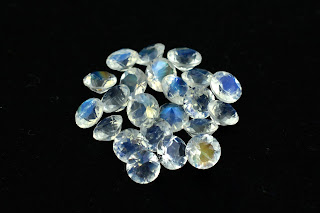TEN THINGS YOU MOST LIKELY DIDN’T KNOW ABOUT APRIL BIRTHSTONE
Diamond or the April Birthstone is shrouded in myths and legends. People are fascinated by the power and mystery of Diamonds since they were first found. Various diamond myths have evolved from different civilizations throughout the millennia. Throughout history, diamonds have remained one of the most beautiful jewels.
But what is it about diamonds that makes it so fascinating? It is amazing not just for its capacity to capture a person’s heart in a matter of seconds, but also for the fact that it was produced before the dinosaur era.
Till date with so much factual knowledge about diamonds at our fingertips, numerous myths about diamonds exist, many of which are hotly debated. It is still the ultimate symbol of love, making it the perfect present for anniversaries, birthdays, and every special occasion.
In a nutshell, here are ten intriguing facts about the mystical gemstone that will make you fall in love all over again:
DIAMONDS ARE VIRTUALLY FIREPROOF
Diamonds are the world’s hardest natural material. They are generally unaffected by the fire. A diamond must be heated to 1562 degrees Fahrenheit (850°C) before it can be burnt. (A normal home fire reaches a temperature of about 1100 degrees Fahrenheit)
A house fire can cause the white milky, hazy appearance on a diamond. The stone is often then recut to get rid of the burned white area, reducing the diamond's size, but leaving no sign that it had been ever damaged.
o DIAMONDS COME UP TO THE SURFACE THROUGH VOLCANIC ERUPTIONS
Diamonds are transported to the surface from the mantle by Kimberlite; a rare form of magma that erupts at a diatreme or pipe, a type of volcano vent.
Kimberlite is a gas-rich, potassic ultramafic rock that contains olivine, phlogopite, diopsite, serpentine, calcite, and minor amounts of apatite, magnetite, chromite, garnet, diamond.
o METEORITE STRIKES CAN CREATE DIAMONDS
Russia has uncovered a hidden diamond treasure worth “trillions of carats”. The diamond-filled crater was allegedly formed 35 million years ago when an asteroid collided with Siberia. An asteroid of 3 to 5 miles in diameter carved a 63-mile-wide crater in the Earth, burying layers of fine-grain diamonds beneath the surface.
Despite the diamonds’ alleged immense worth, Russia has not mined them since the location is too remote and inaccessible, preferring instead to keep the place hidden for decades (at least according to the Russian government).
o THE LARGEST DIAMOND WAS NOT FOUND ON THE EARTH
Lucy is the world’s largest Diamond!
Not only is the Diamond eternal at 10 billion trillion trillion carats, but it also smashes the previous record holder, the golden jubilee, which was 564 carats. Our sun is thought to go through a similar phase someday in the future. As a result of its core temperature dipping below 12,000 degrees Fahrenheit, Lucy developed a pulsing aura (6,600 Celsius).
o DIAMONDS ARE MADE UP OF ONLY ONE COMPONENT
Diamond is a unique member of the mineral kingdom due to its chemical makeup and crystal structure.
Diamond is the only gemstone that is made up of only one element: Carbon. It usually contains 99.95 percent carbon. One or more trace elements, which are atoms that are not part of the diamond’s fundamental chemistry, can make up the remaining 0.05 percent. Its hue and crystal form can be influenced by trace elements.
o DIAMONDS CAN BE CREATED FROM THE REMAINS OF A LOVED ONE
Human ashes can be turned into diamonds because diamonds are composed of carbon and the human body is 18 percent carbon. The carbon atoms in the ashes can be separated from the other elements and utilized to imitate the natural process of diamond formation in the laboratory.
o DIAMONDS WERE NOT USUALLY FOUND IN MINES
The bulk of diamonds on the market today are mined underground or under seawater with large gears and sophisticated technology. In the ancient days, miners discovered diamonds beside or at the bottom of rivers before they were mined below the earth’s surface. The term for this sort of mining is alluvial mining
o DIAMONDS WERE ONLY AVAILABLE TO THE ROYALS
The general population did not always wear
diamonds. During the 20th century, France enacted legislation that stated
that only the king might wear diamonds. If a peasant or a non-royalty member of
the community was caught wearing the diamond, they might face severe
punishment. Diamonds were quite a scare during this period.
o DIAMONDS LAST A LIFETIME
Diamonds are the hardest material on the planet, with an incredibly rigid crystalline structure that makes them almost unbreakable. Peculiarly, carbon particles bind within a diamond when exposed to the severe circumstances present below the earth’s surface results in their hard structure. Diamond Jewelry is a stunning choice for rings, pendants, or earrings. Because of its hardness, you can wear diamonds daily basis. You could wear this diamond jewelry anywhere and draw everyone's attention.
o MILLIONS OF TINY DIAMONDS ARE FOUND IN A CANDLE FLAME
Professor Wuzong Zhou, a chemistry professor at the University of St. Andrews, found that small diamond particles occur in a candle flame. Research indicated that a candle flame produces 1.5 million diamond nano particles per second while it burns.
Unfortunately, the diamonds are burnt away and turned into carbon dioxide in the process, but this will permanently transform how we see a candle flame.
April’s brilliant birthstone -The diamond, is by far one of the most well-known and probably most sought-after gems in history. Even though diamonds have long been regarded as the ultimate expression of eternal love, a normal individual realizes thisby their own unique experience. The intriguing world of DIAMONDS has no limit.
More Information on :- https://www.chordiajewels.com/


Comments
Post a Comment